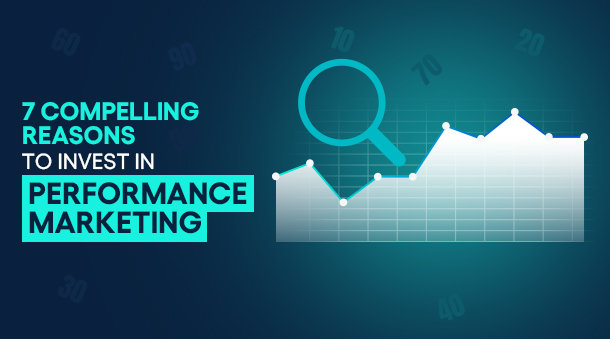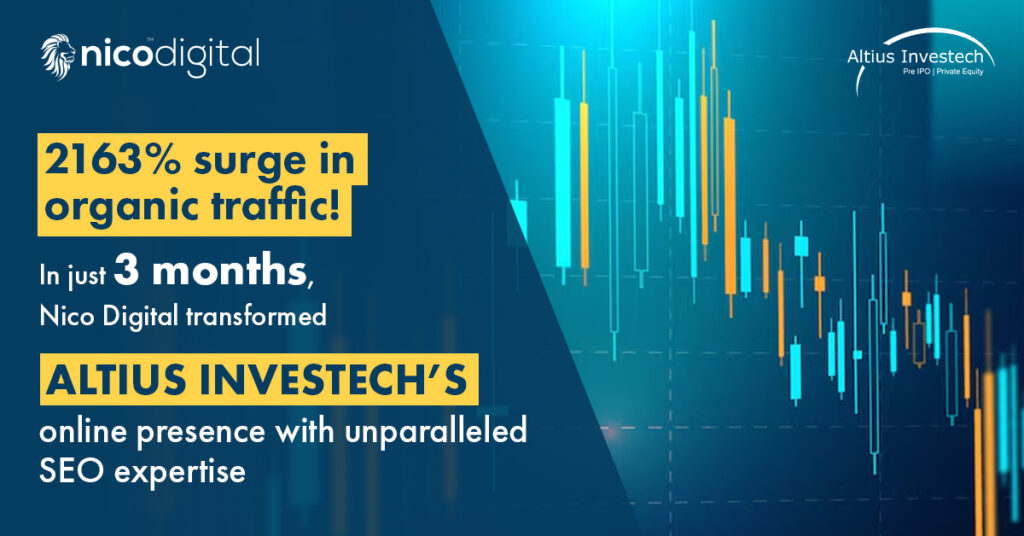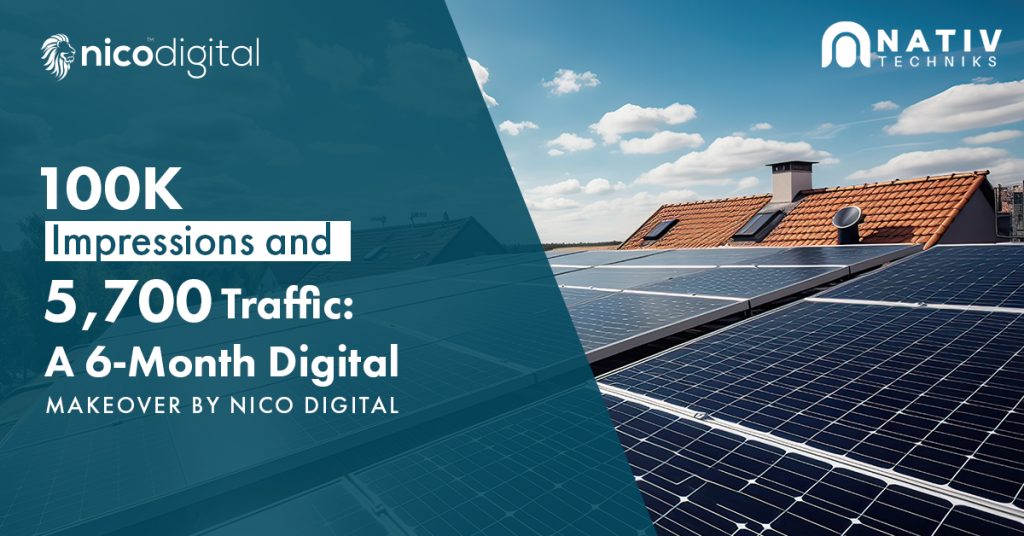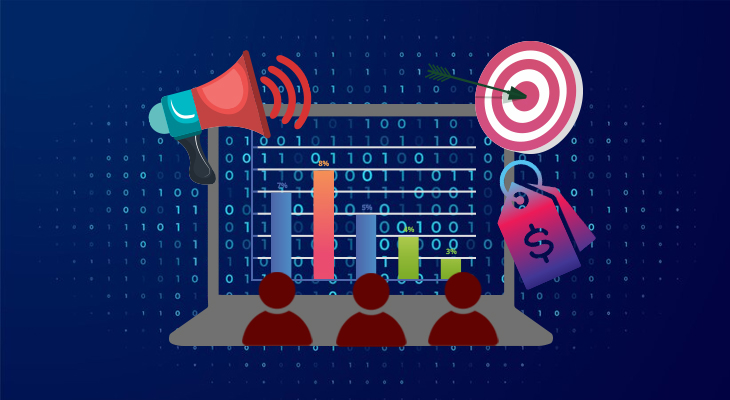
It was in the 19th century when the famous English merchant John Wanamaker said that half his money spent on advertising was wasted. However, the real problem according to him was that he didn’t know which half it was.
This posed a major challenge for business owners. While marketing and advertising are effective, understanding exactly how they work and to what extent can be a complex task.
Fast forward to the year 2021, and Statista had some very interesting data to tell us, marketers.
In that year, the net spending on digital advertising was $455.3 billion.
Yes, you read that right!
But, how effective was that spending?
Well, the answer lies in performance marketing.
So, hold on to your wallets, as we dive, headfirst, into the world of performance marketing to find 7 compelling benefits, where every buck spent is measurable and results are tracked in real-time.
What is Performance Marketing?
The term performance marketing was coined by marketing companies in the mid-1990s. If marketers have a choice, why would they invest in anything else other than marketing that brings results?
Thus, to define performance marketing, it is a results-driven approach to marketing. Here, advertisers or business owners pay for their advertising only when a specific action or outcome is achieved.
The actions can include leads, clicks, sales or even other desired customer behaviors.
Performance marketing is a pay-for-results advertising strategy.
Thus, performance marketing flips the script on conventional advertising. This results-driven approach ensures that marketing budgets are spent efficiently, which helps to maximize return on investment (ROI) by directly tying costs to tangible outcomes.
Moving on, let’s look at the types of performance marketing that exist.
Types of Performance Marketing
There can be different types of performance marketing, which are carried out through different channels. Let’s have a look at some of the most common ones.
Types of Performance Marketing
1. Social Media Advertising
2. Search Advertising
3. Display Advertising
4. Affiliate Marketing
1. Social media advertising

One of the most popular forms of performance marketing is social media advertising. Ads can be run on social media sites like Facebook to target people who have visited a business’ website or have shown interest in a particular product or service.
This is also known as retargeting and helps re-engage potential customers who are already familiar with the brand. Social media ads can be customized based on demographics, interests, behaviors, and even past interactions, creating highly personalized campaigns.
2. Search advertising
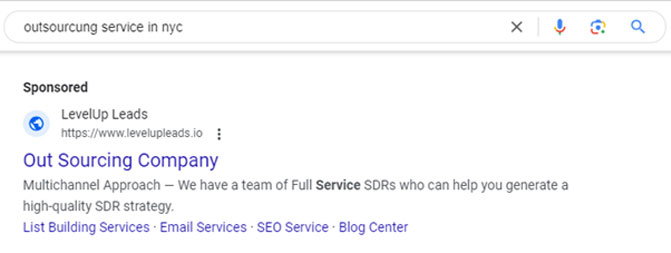
Also known as PPC, search advertising is a type of performance marketing where advertisers pay search engines like Google to have their ads placed above the search results on the search engine results page.
These ads appear when users search for specific keywords which are related to the advertiser’s products or services. This ensures that the ads are shown to an audience already interested in what the business offers. Advertisers only pay when someone clicks on their ad, making it a cost-effective way to attract high-intent traffic to their website.
3. Display Advertising
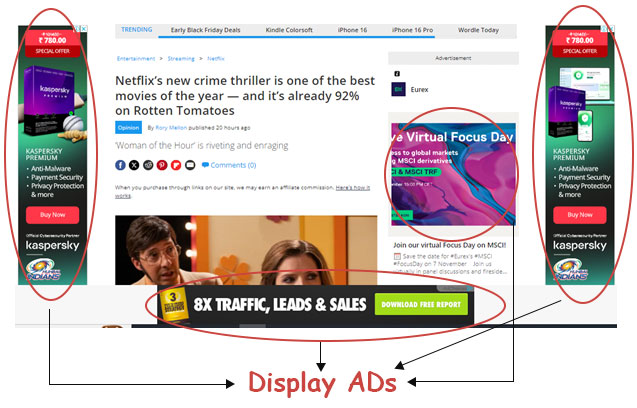
Another type of performance marketing is display advertising. Here, the ads are shown on certain web pages which the user visits, which show as banner ads.
These ads are typically shown based on the user’s browsing behavior, interests, or demographic data, making them highly targeted. Display ads can be used to raise brand awareness, retarget visitors who have previously interacted with the brand, or even drive specific actions like clicks and conversions. Also, advertisers only pay when a user interacts with the ad.
4. Affiliate Marketing
Affiliate marketing is where businesses reward their affiliates for each customer they bring through their affiliate efforts. Affiliates use various channels, like blogs, websites, email marketing, or social media, to promote the business’s products or services.
When a customer takes a desired action, such as making a purchase or signing up, the affiliate earns a certain commission based on the agreement. This is a results-driven model and is beneficial for both the business and the affiliate, as businesses only pay for actual results.
The average cost per action (CPA) comes to $49 for paid search and $75 for display ads.
Source: WordStream
How do you measure performance marketing?
There are certain terms that you need to be familiar with to measure performance marketing. These include the following highlighted below.
1. Conversion rate
A conversion rate (CR) represents the proportion of individuals who perform a desired action—like making a purchase or filling out a request form after engaging with an advertisement.
For example, in the context of a pay-per-click (PPC) campaign, your conversion rate would be calculated as the percentage of users who complete that specific action after they click on the ad.
2. Return on Advertising Spend (ROAS)
Your return on advertising spend (ROAS) measures the total revenue generated in relation to the cost of an advertising campaign. It is similar to calculating gross income. ROAS provides insights into the overall earnings derived from your advertising efforts and helps you assess the effectiveness of your campaigns.
3. Cost per Acquisition (CPA)
Cost per acquisition (CPA) indicates the expense incurred by your company to gain a new customer. For example, if you invested $50 in an advertising campaign and successfully acquired one new customer, the CPA for that campaign would amount to $50.
4. Return on Investment (ROI)
Your return on investment (ROI) is the profit generated by a campaign after subtracting its costs. Although ROAS is similar to gross income, performance marketing ROI is more comparable to net income, as it stresses on profitability rather than just generating revenue.

of marketers state that proving the ROI of their marketing efforts is a big challenge.
Source: HubSpot
5. Customer Lifetime Value (CLV)
Customer Lifetime Value tells you the total revenue a certain customer is expected to generate for your brand throughout their entire relationship with your brand or company.
You can use CLV (Customer Lifetime Value) along with other numbers to see if your ads are worth the cost. For example, if your ad costs $50 per customer (CPA), but that customer is likely to spend $1000 with your business over time, it’s clearly a good deal to spend a little now for a big return later. However, if your ad costs $100, and the customer is only expected to spend $90 in total, then you can understand it’s not a good investment.
Now that you have the basics clear about performance marketing, and the key terms involved, let’s take a look at how performance marketing works.
Performance Marketing: How It Works?
There are certain steps involved in performance marketing. And although you may still be fuzzy with having to remember the key terms involved, we have broken down the steps in layman’s terms to make it easy for you to understand.
 1. Research your market
1. Research your market
There are certain steps involved in performance marketing. And although you may still be fuzzy with having to remember the key terms involved, we have broken down the steps in layman’s terms to make it easy for you to understand.
 2. Set clear goals
2. Set clear goals
In this step, you will be setting clear and measurable goals for your campaign, and also certain KPIs to track its overall success.
 3.Formulate a strategy
3.Formulate a strategy
Here, you will be developing a plan that takes into account the goals you have set in step 2. and the information you gathered from your market research in step. 1.
 4. Create your campaign
4. Create your campaign
In this step, you will be designing your ad creatives along with incorporating compelling copy to attract your audience. You will also be selecting the right channels and setting targeting criteria for promoting products or services.
 5. Tracking and analytics
5. Tracking and analytics
This is the step where we have to ensure we continuously monitor the performance of our marketing efforts and measure it against the KPIs we had set earlier.
 6. Optimize your campaign
6. Optimize your campaign
In this step, we will use our tracking data to refine and optimize our campaigns to achieve the best possible outcomes and enhance our overall ROI.
 7. Scale your campaign
7. Scale your campaign
Once your campaign is successful you will amplify it to reach a broader audience and generate more revenue.
7 Irresistible Reasons to Start Performance Marketing Today
Now that you know the nitty gritties of performance marketing, let’s look at 7 reasons to start your performance campaign today, each one designed to get you excited and eager to take action!
1. Pay Only For Results
Sounds exciting right?
Well, this is one of the most compelling benefits of performance marketing. It has a unique payment model which allows businesses to pay solely for results achieved. Unlike traditional types of marketing where advertisers get loads of upfront costs without any guaranteed outcomes, performance marketing operates on a pay-for-performance basis.
Performance marketing charges only for results, minimizing risk and maximizing budget efficiency
This means that companies only disburse funds when specific actions—such as clicks, leads, or sales—are completed. This helps to significantly reduce financial risk and ensures that marketing budgets are allocated efficiently.
2. Enhanced Targeting and Personalization
Performance marketing has one unique ability – it helps to target specific demographics with precision. And this level of targeting goes beyond just basic demographic information – it also allows marketers to reach potential customers based on behaviors, interests, and even the time of day.
Performance marketing targets audiences precisely, enhancing engagement and loyalty.
Thus, as a result of this, marketers can tailor their campaigns to resonate more deeply with their target audience. This leads to higher engagement rates and improved outcomes for conversion.
In addition to this, this personalized approach not only enhances customer satisfaction but also fosters loyalty as consumers feel understood and valued by brands that cater to their unique preferences.
3. Real-Time Analytics for Continuous Improvement
One major benefit of performance marketing is that it gives access to real-time analytics. Marketers can check how their campaigns are doing at any time, which lets them make quick changes based on the data. This ability helps businesses improve their strategies on the spot, and helps to make campaigns more effective.

of business leaders see increased customer retention from real-time data analytics.
Source: Harvard Business Review
For example, if some ads aren’t performing well, marketers can quickly adjust their tactics or shift budgets to better-performing channels.
This flexibility not only boosts results but also helps marketers make informed decisions that align with their business goals.
4. Expanded Brand Awareness
Another benefit of performance marketing is that it offers a strong way to boost brand visibility across different audiences and platforms.
By using various channels like social media, search engines, and affiliate networks, businesses can tap into wider markets than the ones permitted usually by traditional advertising methods.
Companies with omnichannel strategies retain an average of 89% of their customers
Source: Invespcro
This expanded reach is especially useful for brands aiming to enter new demographics or geographic areas. In addition to this, as affiliates promote products through their established networks, brands get exposure to potential customers they might not have reached otherwise. Over time, this increased visibility can enhance brand recognition and loyalty.
5. Cost Efficiency and Budget Control
Wouldn’t you love it if your marketing campaigns were cost effective?
Well, cost efficiency is one key advantage of performance marketing. Here, businesses only pay for successful results, not just impressions and clicks. This helps them manage their budgets more efficiently.
And this approach helps them to focus their resources on high-performing campaigns and avoid wasted spending on ineffective strategies.
The transparency factor of performance marketing also lets companies closely monitor their spending and adjust their budgets in real-time based on performance data. This control ensures that every buck spent directly helps to support business goals.
6. Flexibility Across Channels
Performance marketing equals unmatched flexibility. Thus, whether you are using social media ads, email marketing or even affiliate partnerships, businesses can test different approaches without needing large investments.
This type of flexibility helps marketers discover which channels can deliver the best results according to their predefined goals.
Thus, they can adjust their strategies as needed. And as market trends and consumer behavior change, the ability to quickly adapt becomes a key advantage in staying competitive.
7. Building Long-Term Customer Relationships
If you thought performance marketing was about immediate sales, then you are wrong.
It can also help you build long-lasting relationships with customers. When marketers run targeted campaigns that cater to the different interests and behavior of customers, they can build a stronger connection with your audience.

of social media users buy from targeted ads.
Source: Institute Data
When customers receive personalized content that aligns with their needs, they will be more likely to become loyal to a brand. And this type of continuous engagement not only leads to repeat purchases but also promotes word-of-mouth referrals.
Final thoughts
Performance marketing might just be the game-changing marketing tactic for 2025. It can be an incredibly powerful tool for generating targeted leads and increasing conversions.
From reducing ad spending to acquiring quality leads, performance marketing is one of the most effective marketing strategies and should be on every marketer’s bucket list.
Ready to transform your clicks into loyal customers?
UNLOCK the full potential of your business with Nico Digital’s performance marketing services. Our data-driven strategies ensure you get measurable results, not just impressions. Let’s boost your ROI and take your business to the next level.
Get started today!

